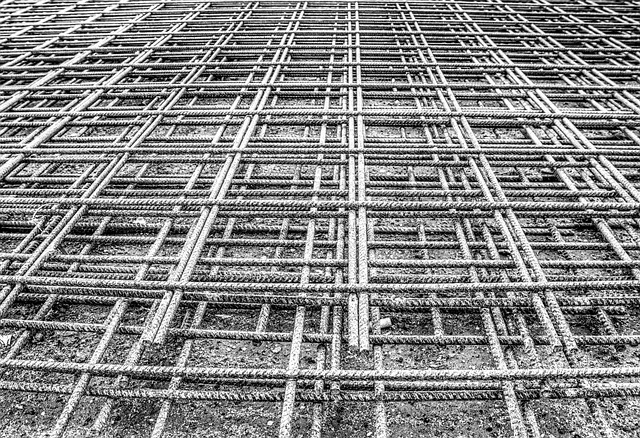Foundation issues caused by environmental factors require prompt identification and professional evaluation. Comprehensive inspections using visual, moisture, structural, and non-destructive tests guide tailored Foundation Solutions. Techniques like underpinning, foundation replacement, and repairs ensure structural integrity and longevity. Technological advancements in sensors, 3D scanning, and digital communication enhance assessment and repair accuracy. Choosing the right Foundation Solutions based on home age, climate, and needs is crucial for successful restoration. Long-term maintenance, including regular inspections and drainage management, prevents future damage. Historic and modern structures benefit from Foundation Solutions, revitalizing their structural integrity and aesthetic appeal.
Residential foundation restoration is a critical process that ensures the longevity and structural integrity of homes. Understanding common foundation issues is the first step towards effective repair, followed by meticulous evaluation using advanced assessment methods. This article delves into various foundation repair techniques, highlights the transformative role of technology, and guides homeowners in choosing the right foundation solutions. We explore successful case studies, offering insights into long-term maintenance strategies for optimal structural stabilization.
Understanding Common Foundation Issues

Foundation issues are common concerns for homeowners, often arising from various environmental and structural factors. Some of the most prevalent problems include cracks in the foundation walls or floors, uneven floors, doors or windows that stick or do not align properly, and visible gaps or misalignments around doorjambs and window sills. These issues can be attributed to several causes such as settlement, heave (due to ground movement), poor initial construction, or changes in soil conditions over time.
Identifying the specific cause is crucial when considering foundation solutions. For instance, cracks may indicate structural damage or settling, while uneven floors could be a result of expansive clay soils or poor drainage. Homeowners should also look out for signs of moisture intrusion, like mold growth or musty odors, as they often point to leaks or inadequate waterproofing. Addressing these common issues promptly is essential to prevent further damage and maintain the structural integrity of a home.
Evaluating Damage: Assessment Methods

Evaluating damage is a crucial step in any residential foundation restoration project. Professionals employ various assessment methods, such as visual inspections, moisture measurements, and structural analysis, to accurately determine the extent of the issue. Visual assessments help identify cracks, leaning walls, or uneven floors, while moisture meters gauge humidity levels, indicating potential water intrusion.
Foundation solutions experts may also use non-destructive testing techniques, like sonic or electromagnetic surveys, to assess internal structural integrity without causing further damage. These methods provide a comprehensive understanding of the foundation’s condition, guiding the restoration process and ensuring effective long-term solutions.
Foundation Repair Techniques Explored

Residential foundation restoration often involves exploring various foundation repair techniques to ensure structural integrity and longevity. One of the most common approaches is underpinning, where additional support is provided beneath the foundation to address settlement issues. This technique uses materials like concrete or steel to reinforce and stabilize the existing foundation.
Another popular solution is foundation replacement, which involves removing damaged sections and installing new foundations using modern materials and techniques. Foundation solutions can also include exterior repairs such as re-pointing mortar joints and repairing cracks, along with interior stabilization methods like piering and wall anchors. These methods are chosen based on the extent of damage, the type of soil, and specific structural requirements to ensure a safe and durable home.
The Role of Technology in Restoration

The advent of technology has significantly revolutionized the landscape of residential foundation restoration, offering innovative solutions to complex problems. Modern tools and techniques enable professionals to accurately assess structural integrity and plan repairs with unprecedented precision. For instance, advanced sensors and 3D scanning technology can detect even the subtlest cracks or shifts in a foundation, allowing for targeted interventions before issues escalate.
Digital advancements also streamline communication between restoration specialists and property owners. Virtual consultations and real-time project updates enhance transparency and customer satisfaction. Moreover, the integration of smart materials and construction methods ensures more durable and long-lasting foundation solutions, addressing the root causes of damage rather than merely providing temporary fixes.
Choosing the Right Foundation Solutions

Choosing the right foundation solutions is a critical step in any residential restoration project. It’s essential to consider factors like the age and condition of your home, local climate, and specific structural needs. Different Foundation Solutions offer varied benefits; for instance, concrete slabs provide a stable base suitable for regions with moderate climates, while basement systems are ideal for areas prone to heavy rainfall or frost heave.
Professional evaluators can help identify the best approach by assessing unique challenges. They offer solutions tailored to address settlement issues, cracks, or water damage, ensuring your home’s structural integrity and long-term durability. Remember, selecting the right Foundation Solution not only enhances the stability of your residence but also increases its value in the long run.
Restoring Balance: Structural Stabilization

Restoring balance is a crucial step in residential foundation restoration, ensuring structural stabilization and longevity. Many homes, especially older ones, may experience settling or shifting due to various factors like soil conditions, water damage, or poor initial construction. This can lead to uneven floors, cracks in walls, and doors that don’t close properly. Foundation solutions like piering, underpinning, or slab jacking are employed to realign and stabilize the structure.
These methods address the underlying issues causing instability, providing a solid base for the home. Piering involves installing steel piers into the soil to support the foundation, while underpinning adds new support beams below the existing foundation. Slab jacking, on the other hand, lifts and levels concrete slabs by injecting polyurethane foam beneath them. By choosing the right foundation solutions, homeowners can restore balance, prevent further damage, and ensure their homes are safe and secure for years to come.
Long-Term Maintenance Strategies

Implementing long-term maintenance strategies is crucial for safeguarding your home’s investment and ensuring the longevity of your residential foundation. Regular inspection is key; identify any signs of damage, cracks, or uneven settling promptly. Addressing issues early through minor repairs can prevent significant problems down the line.
Consider tailored foundation solutions like structural repair techniques, underpinning, or piering to reinforce the base. Maintaining proper drainage around your property by clearing debris from gutters and installing adequate storm drains is also vital. Additionally, keeping moisture levels in check within the basement or crawl space will mitigate potential humidity-related issues that could compromise the foundation’s integrity over time.
Case Studies: Successful Restoration Projects

Successful restoration projects serve as a testament to the transformative power of residential foundation solutions. Consider a historical home in downtown, suffering from significant structural damage due to years of neglect and fluctuating weather conditions. Through meticulous assessment and careful planning, a team of experts implemented a comprehensive repair strategy. This involved replacing deteriorated concrete, reinforcing weak spots with steel beams, and injecting polymeric foam into the voids to provide additional support.
The result was nothing short of remarkable – the once crumbling structure now stands tall and stable, retaining its original charm while ensuring longevity for years to come. Similarly, a modern apartment complex faced a different challenge: settling and cracking walls due to poor initial construction. Foundation experts addressed these issues by utilizing advanced underpinning techniques and installing exterior wall anchors. This not only stabilized the buildings but also enhanced their overall aesthetic appeal, proving that effective foundation solutions can revitalize both old and new structures alike.
